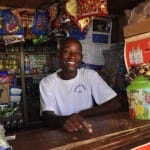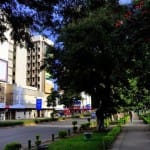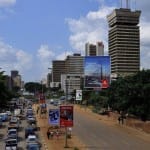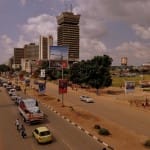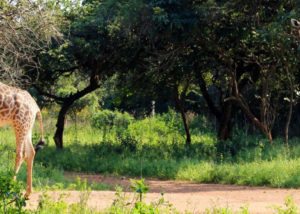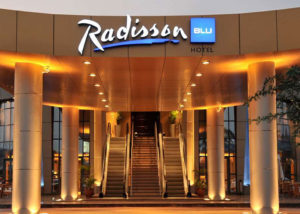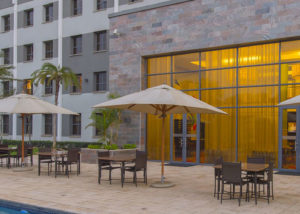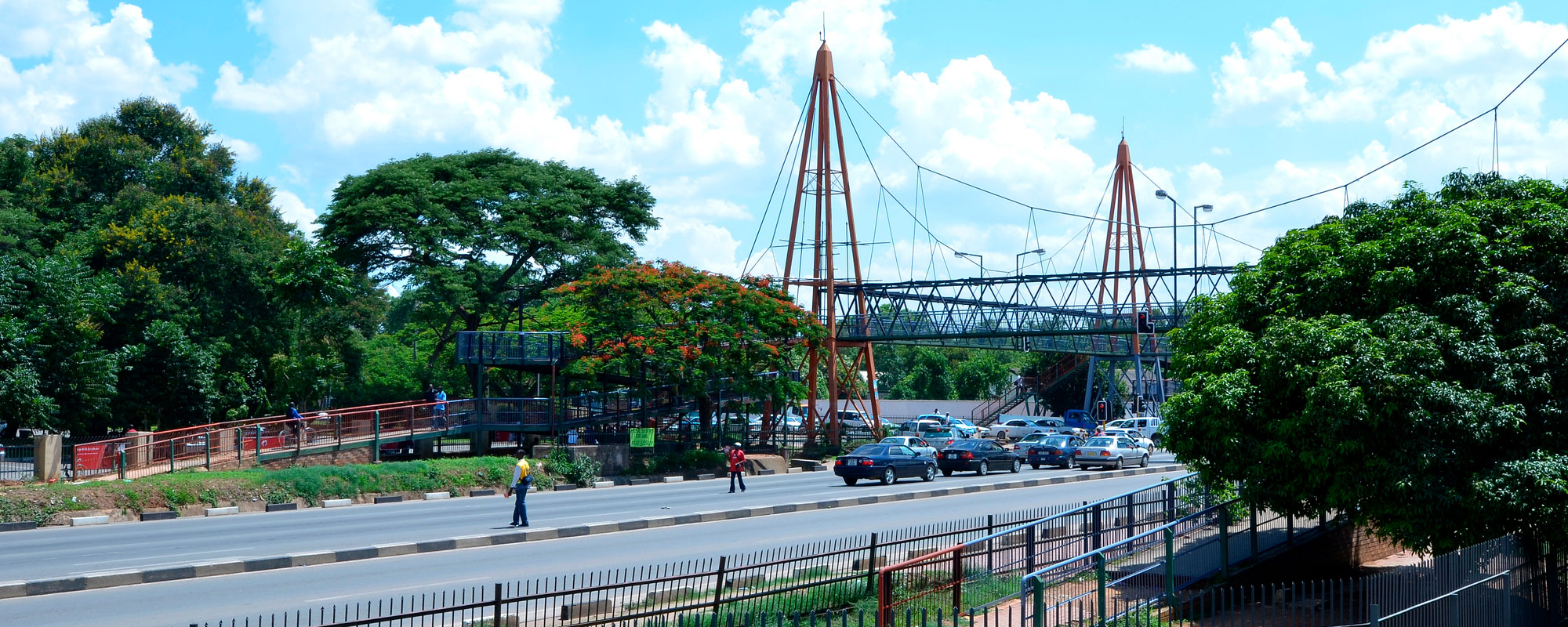
LUSAKA – CAPITAL OF ZAMBIA
Lusaka is something of a boom town. New buildings are going up everywhere and many chain stores and shopping malls are springing up all over the sprawling suburbs.
The road development isn’t quite keeping up so peak-hour traffic can be like other cities’ but it has an optimistic air of a town on the rise. For many, this is the perfect example of what economic liberalisation has done for the country. And viewed from the villages, Lusaka is the glittering capital which still persuades rural Zambians to migrate to the city in search of jobs and dreams. Most people try to make an honest living selling their wares or services, always with a friendly smile.
The markets are a hive of activity as thousands of stalls are set up, upgraded and cleared away every day: a mix of motor spares dealers, restaurants, hairdressers, fishmongers, fruit sellers and rows and rows of salaula – stalls of discarded clothing from the West sold to Africa by the bale. Salaula means to ‘select from the pile’ or ‘rummage through the pile’, and this is exactly what potential buyers do.
The capital covers an area of over 360km2 / 224mi² and is one of the fastest-growing cities in central Africa. Its population almost tripled in the immediate post-independence era and continues to grow daily. It is a sprawling metropolis with many multi-storey buildings, high-walled suburbs and busy shanty towns. Development has brought together people of many nationalities, making it a bustling centre for economic, political and cultural activities. The city lies at the junction of the main highways to the north, east, south and west, and at an altitude of 1 300m / 4 265ft. There are air links to most of the major tourist destinations in Zambia from Kenneth Kaunda International Airport.
A relatively young population means there are plenty of clubs, upmarket restaurants, bars and shebeens in Lusaka – if you want to party in Zambia, this is the place to be. There are several malls and Manda Hill is considered the most premier, just off the Great East Road.
GETTING AROUND
Most commuters get around in mini-bus taxis, which can be cheap but crowded. Major hotel groups can arrange airport transfers and major international car-rental agencies like Avis and Europcar have a strong presence.
MORE INFORMATION
- City: Capital
- Population: +.- 2 Million
- Size: 70km sqare
- Shopping: Manda Hill
- Parks: Lusaka National Park
Lusaka is close to the centre of Zambia between the eastern and western bulges. All major routes to the east, west, north and south flow through the city.
- The Great North Road comes down from Tanzania via Kapiri Mposhi, and is about 1 100km / 684mi from the Tanzanian border.
- The Great East Road from Chipata to Lusaka is 570km / 354mi.
- The road from Livingstone in the south meets up with the Kafue Road and is 470km / 292mi long. From the Chirundu border with Zimbabwe, the route is well paved and 136km / 85mi long.
- The Mongu road coming in from the west via the Kafue National Park is 591km / 367mi long.
The domestic railway goes to Livingstone, Kapiri Mposhi and the Copperbelt. The Tanzania Zambia Railway – Tazara – comes down as far as Kapiri Mposhi, where the Zambia Railways train links it to Lusaka. Buses arrive from Harare in Zimbabwe, Lilongwe in Malawi, Johannesburg in South Africa, Livingstone and the Copperbelt.
Kenneth Kaunda International Airport, which is 14km / 9mi from the city centre, receives most international flights.
Most of the banks and many bureaux de change can be found along Cairo Road.
For groceries and general supplies there are several shopping malls along the Great East Road, the Kafue Road south of the city and out towards Leopards Hill. There are also several suburban shopping centres – try Kabulonga, Northmead and Woodlands.
A visit to one of Lusaka’s markets is a must. It’s an interesting experience and well worth it for the colourful and lively atmosphere. The Soweto Market. Pakati Market and the Lusaka Food Market are among the best known.
Curios and crafts can be found at Kabwata Cultural Village and Kubu Crafts at the Manda Hill shopping centre. Moore’s Pottery has an excellent range of ceramics, and for gemstones and fine jewellery, try Jagoda Gems.
There are several sports clubs in Lusaka that offer facilities for golf, tennis, swimming and squash. For golfers, there are the Lusaka, Chilanga and Chainama Hills Golf Clubs. The Lusaka Club offers bowls, tennis and squash. Polo is a popular sport and the polo field on Nangwenya Road usually has matches on the weekends. Hash House Harriers organise walks and runs. The Olympic-size Lusaka City Council swimming pool is off Lubu Road.
Lusaka has an interesting history and culture and there are plenty of sights to see to help make the most of both. As with many African cities, Lusaka’s markets are its beating heart. For the best local wares and wonders, the market at the Arcades Shopping Centre on Great East Road is a good place to fill your suitcase with souvenirs before flying home. If it’s atmosphere and cheap local fare that you are after then the Town Centre Market or Lusaka City Market are a better bet and less-touristy.
The National Museum is also worth a visit, with a collection of contemporary Zambian paintings and sculpture as well as a more archaeological and ethnographic section upstairs that fills visitors in on some of Zambia’s fascinating cultural history.
For a spot of suburban safari, Lusaka has a national park the outskirts of the city. You’ll find it along the Leopards Hill Road. There’s a high viewing platform or several roads to take a drive and see several species of antelope and other plains game.
On the southern side of town you’ll find the Lilayi Lodge in its own private game reserve. Further along is the Munda Wanga Environmental Park with stunning botanical gardens and an animal sanctuary. Here rescued wild animals are rehabilitated for reintroduction into the wild, including lions and cheetahs. It also has a relaxing pool and barbeque area.
Kalimba Reptile Park is a great place to view crocodiles and snakes and then grab a beer and a sandwich!

